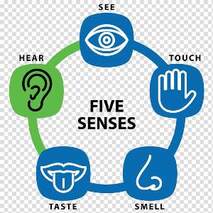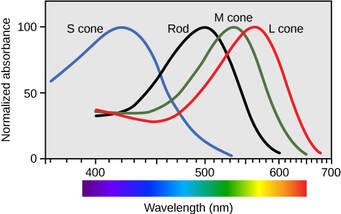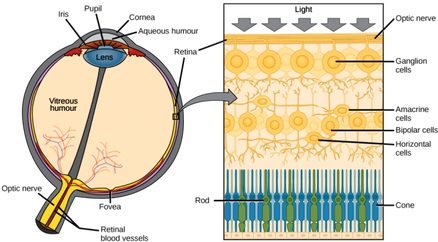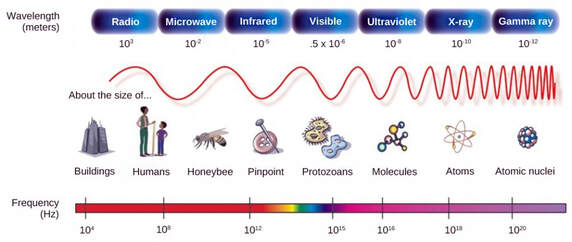
THE FIVE SENSES
How human beings interpret and respond to the world around us makes us who we are. Novelists, aspire to make their characters vivid and to imbue them with realistic emotions, actions, and reactions. It’s all in the emotions: how characters feel, act, and react.
All authors are human beings so they should know all about emotions, right? But do we know what is behind those emotions?
The five senses – sight, sound, smell, taste, and touch – are our doorway into the world. The Greek philosopher Aristotle was the first to write about them. Presumably, we need all the senses to survive. Although people can get along without all five of them, humans are not designed to function with more than one or two inoperative senses. The five senses are complimented by four internal senses: pain, balance, thirst, and hunger.
Each of the five senses function independently, but they interact and complement one another. Under various stimuli, the combined effect of all five senses forms a unique impression of an experience. That occurrence is internalized through our five sensory organs – eyes, nose, ears, tongue, and body. Thus, they work simultaneously, resulting in everything human beings learn, feel, and know.
When all this input is processed by the brain, various highly intertwined emotions and feelings occur. What we hear, see, taste, smell, and touch provides us with information which tells us how to feel. The reverse is also true ‒ what we feel can be heavily influenced by what our senses are taking in. So, let’s start by exploring each of the senses.
Image Source: pexels.com/photo/human-eye

Vision ‒ the most used of the five senses ‒ is the ability to detect light patterns from the outside environment and interpret them as images. The eyes are the sight organs, and most people know essentially how eyes function.
Although we are bombarded with sensory information, and the sheer volume of visual input can be overwhelming, our visual systems have evolved to focus on the most-important stimuli. To deal with just the important visual stimuli, an estimated one-third of the cerebral cortex is dedicated to analyzing and perceiving visual information.
A novelist doesn’t need to know the details of how the eye works, but there are several important factors to keep in mind. The most significant elements of vision are the amount of light and brightness, and the distance from the object observed.
● Anatomy of the Eye
Vision is the only photo responsive sense. Visible light travels in waves and is a very small slice of the electromagnetic radiation spectrum.
The photoreceptive cells of the eye, where transduction of light to nervous impulses occurs, are located in the retina. To get there, light passes through the cornea and the lens, where both bend the light waves to focus the image on the retina. The iris, the colored part of the eye, regulates the amount of light entering the eye.
Rods respond in low light and can detect only shades of gray. Cones respond in intense light and are responsible for color vision. The rods and cones are the site of transduction of light to a neural signal. A large degree of processing of visual information occurs in the retina itself, before visual information is sent to the brain along the optic nerve.
Visual signals along the optic nerves carry information on form, movement, depth and brightness, color, and finer details. Once in the brain, visual information is processed in several places. Some of it projects directly back into the brain, while other information crosses to the opposite side of the brain. This crossing of optical pathways produces the distinctive optic chiasma (Greek, for “crossing”) found at the base of the brain and allows us to coordinate information from both eyes.
● Light and Color
Light travels in electromagnetic waves. A photon is a packet of electromagnetic radiation. The electromagnetic spectrum shows that visible light for humans is just a small slice of the entire spectrum, which includes radiation that we cannot see as light because it is below the frequency of visible red light and above the frequency of visible violet light.
Image Source: opentextbc.ca/?s=SIGHT
We perceive color because of the three types of cones in retina of the eye. The colors of the visual spectrum, running from long-wavelength light to short, are red, orange, yellow, green, blue, indigo, and violet. Humans can distinguish about 500 levels of brightness, 200 different hues, and 20 steps of saturation, or about 2 million distinct colors.
Human rod cells and the different types of cone cells each have an optimal wavelength. However, there is considerable overlap in the wavelengths of light detected.

The reflection of light waves off a surface is what creates our perception of color. People
cannot see all colors, even though they exist beyond our visibility levels.
Wavelengths of Colors
Image Source: opentextbc.ca/?s=SIGHT
When an object appears to us as red, it is because the red wave length is reflected by the object. White objects appear white because they reflect all colors (wave lengths). Black objects absorb all colors so no light is reflected. At very low light levels, we perceive only shades of gray with the rod cells in our eyes. As the amount of light diminishes, colors begin to disappear from our ability to see them.
● What You See Does Not Necessarily Reflect Reality.
The other factor to keep in mind when writing is that “seeing should not be believing”. Not everyone sees the same things at any given place and time, and what you do see may not reflect reality.
This is because our long term memories are essentially who we are, what we believe in, and everything we know. Past experiences molds us into who we are at any given time. The brain learns to use those experiences to identify our values, beliefs, and how we feel about external (and internal) occurrences. Because the brain’s short-term memory can only handle a limited number of details at a time, it develops filters that screen out those things that are important to us.
When the short-term memory receives a multitude of data from the five senses, it utilizes those filters to sort the information. Only those details the brain chooses as being important to the individual, are shipped off to long-term memory. The short-term memory discards the rest.
Of course all this happens almost instantaneously. The result is that people tend to focus on the details that are important to the individual and miss a lot of others. Therefore, you can’t rely completely on what you or others see. Also, people react to the information stored and not that discarded.

Imagine the three people entering are an architect, the wife of a diplomat, and a cellist who play in the local philharmonic orchestra. The architect ogles the dome above the center of the table, thinking about the construction and how a different shape and color might improve the balance of the room. Or perhaps he notices how well the chandelier compliments the shape of the room and table.
The wife of the diplomat may focus on the table settings, colors, the way in which this number of people are seated for lunch, and the pleasant scent from the flower arrangements. She could care less about the dome as she thinks through the arrangements for her dinner party next week. The cellist focuses on the music, listening to the arrangement and the orchestra playing the composition. His attention is not on the visuals but the sounds.
What your characters notice and perceive is a way of describing for the reader what matters to the character and what interests and experiences they have.
Although humans seem to rely more heavily on sight, remember that sounds, vibrations, touch, smells, and a general sense of mood are all processed through the brain in the same way.
● Writing Tips On Using Sight
• Example 1
Don’t create a character who recognizes a face in a dim light at three hundred feet. That’s not going to happen.
An example in real life: “Darrell Edwards was convicted of a New Jersey murder based, in part, on testimony from a witness who claimed that she saw him from 271 feet away on a dark night, when she was not wearing her prescription eyeglasses. Scientifically, it is impossible to see someone well enough from that distance and make an accurate identification.” https://innocenceproject.org/
Just because this kind of mistake can take place in real life, doesn't mean authors don't need to be accurate with details.
• Example 2
Look at something similar to the scene you want to describe and write 20 things you see. Then pick 3 to 4 of the most interesting things and write down the specific details. Then write a description of the object or scene you want to use in your book.
Remember: What you find most interesting is being filtered through your personal lens. Be sure you are using your viewpoint character’s lens, not your own. What is your character interested in and concerned about. Instead of writing about the redness of the brick wall, call out the ivy that’s windings its way across the cracked surface of the bricks?
• Example 3
Instead of describing a scene or object directly, try it indirectly. To convey the brightness of the sun, you could say directly that the sun is bright, but you could also describe the way the light from the sun causes the glass windows to shine solid white.
Next week the blog will feature the Senses of Hearing and Touch.
JUST SAYIN' !
Sources: The Five Senses
https://online.uwa.edu/news/emotional-psychology/#:~:text=List%20of%20the%20six%20basic%20emotions%201%20Sadness,3%20Fear%204%20Anger%205%20Surprise%206%20Disgust
http://puzhen.com/blog/aromatherapy/benefits_of_aromatherapy__essential_oils/balancing_the_five_senses_and_emotions/#:~:text=The%20five%20senses%2C%20although%20independent%20on%20its%20own%2C,various%20emotions%20and%20feelings%20felt%20from%20the%20heart
https://sites.tufts.edu/emotiononthebrain/2014/10/09/emotion-and-our-senses/
https://exploringyourmind.com/senses-can-affect-emotions/
https://www.amazingappeal.com/other/6-ways-keep-emotional-responses-control/
http://ourhumansenses.blogspot.com/2012/12/sense-of-touch.html
https://webstockreview.net/explore/5-senses-clipart-symbol/
https://savvy-writer.com/writing-without-the-use-of-your-five-senses/
https://www.masterclass.com/articles/how-to-use-the-five-senses-in-your-writing
Sources: - Vision
https://www.vecteezy.com/vector-art/431288-parts-of-human-eye-with-name
https://www.rebuildyourvision.com/blog/interesting-vision-facts/understanding-how-vision-works/
https://opentextbc.ca/biology/?s=SIGHT
https://www.pexels.com/photo/human-eye-closeup-photo-801867/
https://www.smithsonianmag.com/science-nature/how-does-your-brain-recognize-faces-180963583/
https://ieeexplore.ieee.org/document/7139090
https://www.sciencelearn.org.nz/resources/47-colors-of-light
https://www.shreyaeyecentre.com/age-related-macular-degeneration/https:/www.shreyaeyecentre.com/age-related-macular-degeneration/
https://online.kidsdiscover.com/unit/eyes/video/how-the-eyes-works#:~:text=Despite%20its%20small%20size%2C%20the%20eye%20is%20a,the%20retina%20are%20upside%20down%2C%20reversed%2C%20and%20two-dimensional.




 RSS Feed
RSS Feed